#belisarius and antonina
Explore tagged Tumblr posts
Text
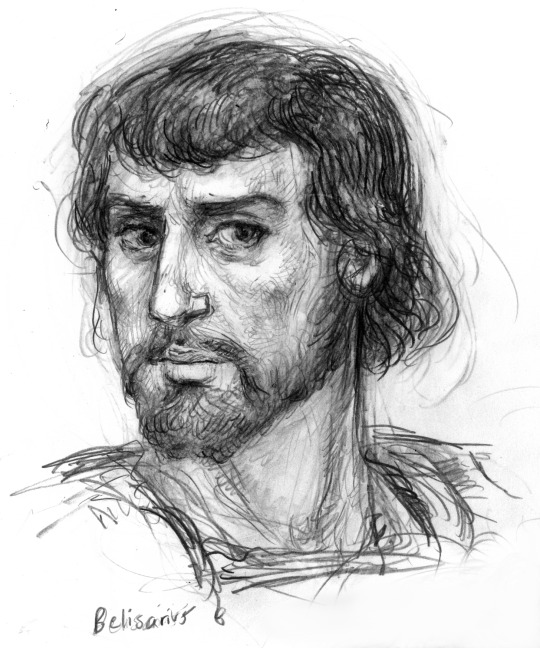
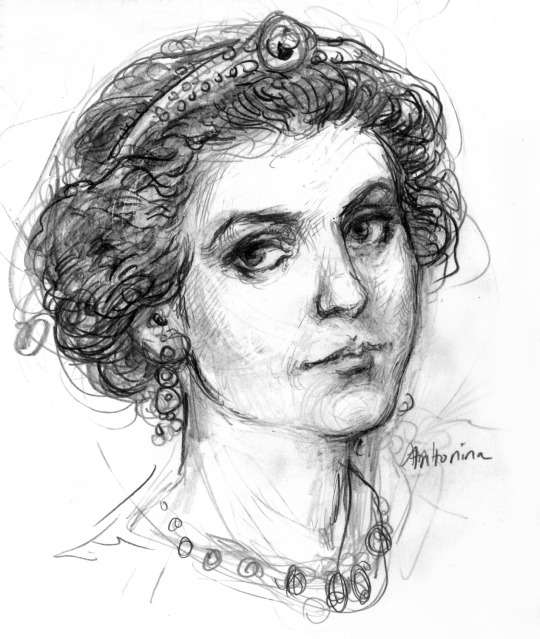
Next in my Byzantine sketch series-- the famous general Belisarius and his wife Antonina! There are fewer sources than there were for Justinian and Theodora, so I just went by the San Vitale mosaics.
#illustration#art#sketchbook#belisarius#antonina#belisarius and antonina#byzantine empire#byzantine#byzantium#sketch#drawing#ancient Rome
145 notes
·
View notes
Text
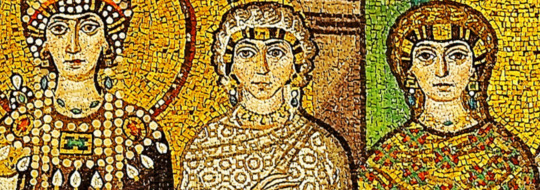
Antonina: a powerful woman in the sixth-century Roman world
"Antonina was the most powerful uncrowned woman in the sixth-century Roman world. She deposed Pope Silverius, arranged for the sacking of John the Cappadocian, traveled across the Mediterranean with her husband, and even occasionally inserted herself into the running of his army. She knew soldiers, officers, the emperor, popes, bishops, and historians, and at various times commanded them, pleaded with them, and intimidated them. This is a remarkable resume, virtually unparalleled among Roman military wives, and certainly without parallel in the sixth century. She was a formidable woman and, like her friend and patron Theodora, one who was occasionally feared. If the reputation of Belisarius is sometimes inflated in modern evaluations, the reputation of Antonina has been chronically underappreciated. Historians have focused far too much on the Secret History story of Antonina’s affair and her supposed domination of Belisarius, and far too little on her exceptional career. She is evidence that elite women in the sixth century could take on public roles alongside their husbands."
Belisarius & Antonina: Love and war in the age of Justinian, David Alan Parnell
#antonina#leaders#powerful women#history#women in history#women's history#6th century#belisarius#byzantine empire#justinian I#empress theodora
302 notes
·
View notes
Text

@suburbanbeatnik OK SO:
As far as the “mixing up different historical eras” problem goes, this actually happens in a lot of different novels. Theodora by Samuel Edwards is the most blatant example I can think of at the moment—near the end of the book, a horde of Huns, inexplicably led by Khosrow, starts marching on Constantinople while Justinian is in his plague coma, and Theodora sells the crown jewels (I don’t believe the narrative specifies the buyer) to fund Belisarius and his troops, who are the city’s last defense. Khosrow is similar to Mehmed II, Theodora takes on the role of Anna of Savoy, and the overall political situation is implied to be very bad for Byzantium, with Constantinople on the brink of total failure and most of the empire's territory gone. (Like, there’s discussion of Justinian and Theodora meeting the invaders at the gates so they can die together, because they think the whole empire is collapsing.) The story does end with the Byzantines winning (using Greek fire, another anachronism), and Theodora gets her jewels back (I do not remember how), but yeah, the author completely blended two very different periods together. Different variants of this exact plot appear in different novels—a *lot* of books treat the 540s as politically similar to the 1200s or 1300s, and a *lot* of books have Theodora sell her crown for some reason or another, usually to fund the defense of the City or one of Justinian’s schemes. (One book–maybe one of the ones by Marié Heese? I can’t think of the title, sorry)—had her sell her jewels to fund the building of the Hagia Sophia. (She gets them back in that book, too—I think Narses literally just discovers an enormous stockpile of gold somewhere, and that fixes the financial problems.) And a lot of different books put Belisarius in a Heraclius or Basil-like role, although I’m less well-versed in Belisarius books than I am in Theodora books. (The Sarantine Mosaic by Guy Gavriel Kay definitely did this—the character of Leontes is pretty much Heraclius and Belisarius combined, while Valerius and Aliana are straightforward Justinian and Theodora equivalents, except for the fact Aliana is the equivalent of an iconodule rather than a Monophysite. But that gets a pass, imo, because it’s not pretending to be totally accurate.)
Religious inaccuracies and mixups are also really common overall, especially in older books. One Victorian-era book called Blue and Green, or the Gift of God: A Novel of Old Constantinople was very bad with this, presumably because the author was a British Protestant who made no secret of his disdain for the “pagan heathenism” of the Byzantine Empire. (His descriptions of religious ceremonies are very funny, because he describes them as, like, Christian ceremonies, if Christian ceremonies had strippers and drugs. The inciting incident of Theodora’s spiral into prostitution is her doing an erotic dance at a respectable, aristocratic wedding—not a bachelor party, an actual wedding—and this is presented as normal.) Really, you can probably just check out any Byzantine book from before, say, the 1980s on archive.org, and there’ll be weird religious anachronisms all over the place. Lots of authors bring iconoclasm or the East-West Schism (the one that happened in 1054) into the sixth century, I guess because those are more recognizable and dramatic than the Monophysite thing. Authors tend to put Justinian and Theodora on the opposite sides of these conflicts, and Theodora is usually on whatever side they consider “wrong,” which differs significantly from book to book depending on the author’s religious leanings.
Regarding the Theodora/Macedonia thing—Ross Laidlaw’s Justinian: The Sleepless One definitely did this (there were a couple of cringe sex scenes in this book—he always referred to Macedonia as “the other one,” I guess to avoid saying her name a bunch of times? It’d be like “Theodora felt the other one’s lips...” and so on. It sounded so strange.) Macedonia was Theodora’s main love interest—Theodora does marry Justinian, and she likes him well enough as a person, but she’s pretty explicitly gay and uninterested in men, and she has an affair with Macedonia until Macedonia dies in an earthquake. I believe Stella Duffy’s Actress, Empress, Whore duology also had Theodora and Macedonia hook up, but Duffy’s sex scenes were less fetishistic and cringeworthy, and their relationship didn’t last for the entirety of the novel. Theodora having sex (or sexually charged interactions) with Antonina, Macedonia and her other female friends is reasonably common in shitty Theodora novels in general, but it’s never, like, a plot point. It’s just an excuse for the author to write about attractive young women getting it on in the Roman baths, or whatever other fetish-y nonsense piques his interest.
These points aren’t even the weirdest things about most of these books, though. I should just sit down one day and do a full post about all of the absurd things that happen in Justinian and Theodora stories, because shit gets real weird in most of them. Messy historical anachronisms and fetish-y male-gaze lesbian sex scenes are nowhere near the strangest aspects of some of these books—remind me, one day, to talk about all of the Penis Diseases these authors invent to explain away Justinian and Theodora's infertility.
#penis disease segments#sexy Amalasuintha murder scenes#cringe Narses/Belisarius/Justinian/Theodora/Antonina love dodecahedrons#Evil Comito Bullshit#some of them give Theodora a fictional evil stepmother and stepsisters so she can be Cinderella#it's wild out there
26 notes
·
View notes
Text
So I listened to the latest episode of Byzantium and Friends, and I can't believe they didn't bring up either of David Drake's insane alternate history Belisarius series. They do mention Eric Flint's Demons of Constantinople, but they kind of laugh it off as an obviously self-published book with a uniquely crazy premise, and I need them to know that they are dramatically underestimating a.) the number of ludicrous Byzantine sci-fi novels out there, and b.) the number of actual publishers who are willing to market these things. Demons in Constantinople almost pales in comparison to the Belisarius Series, in which Belisarius has to fight an evil supercomputer from the distant future. Antonina gets a gun and shoots it at the robot's face, and that's, like, not even the wildest thing that happens in these books. And the General series has Space Belisarius shooting Space Barbarians with vintage guns while riding a horse-sized dog. There are 30+ books that are just about Sci-Fi Belisarius killing people with guns. They all have horribly Photoshopped neon covers that look like Kindle Unlimited rejects. And none of them are self-published.



I mean, for the love of God, look at these things. I just need Anthony Kaldellis to know they exist
#when they mentioned Eric Flint I literally wanted to scream. I was like guys. GUYS.#YOU'RE NOT EVEN SCRATCHING THE SURFACE#that bottom picture is meant to be Antonina and Belisarius by the way#he's holding a magic gemstone that contains a superintelligent AI from the future. I don't know why it's emitting rainbows#or why Antonina is dressed like she bought a bargain bin Cleopatra Halloween costume
4 notes
·
View notes
Photo

Empress Theodora
Theodora reigned as empress of the Byzantine Empire alongside her husband, Emperor Justinian I, from 527 CE until her death in 548 CE. Rising from a humble background and overcoming the prejudices of her somewhat disreputable early career as an actress, Theodora would marry Justinian (r. 527-565 CE) in 525 CE and they would rule together in a golden period of Byzantine history. Portrayed by contemporary writers as scheming, unprincipled, and immoral, the Empress, nevertheless, was also seen as a valuable support to the Emperor, and her direct involvement in state affairs made her one of the most powerful women ever seen in Byzantium.
Early Life
Theodora was born in c. 497 CE, the daughter of a bear-keeper called Akakios who worked for the Hippodrome of Constantinople. The 6th-century CE Byzantine historian Procopius of Caesarea states in his Secret History (Anekdota) that Theodora earned her living, like her mother before her, as an actress, which meant performing in the Hippodrome as an acrobat, dancer, and stripper. Theodora was said to have had one particularly lurid routine involving geese. By implication, considering the common association of the two professions at the time, she was also a courtesan. Procopius would have us believe an especially popular and lustful one, at that.
Procopius' Secret History, is, though, regarded by many as an outrageous gossip piece with a few facts thrown in for authenticity. The writer's attitude to both Justinian and Theodora is plainly that they were the worst thing ever to happen to the Byzantine Empire (in contrast to the official works he wrote under Justinian's patronage which are suitably laudatory of the emperor's achievements in war and architecture especially). Procopius also had it in for Antonina, the wife of Belisarius (Justinian's most talented general), and she is portrayed as constantly scheming with Theodora to create damaging palace intrigues. It is perhaps important to consider, too, that our knowledge of Theodora only comes from male authors and a woman performing any other role than the traditionally submissive one in Byzantine society was bound to be, at best, disapproved of and, at worst, outright demonised.
Before she married Justinian, the nephew of Emperor Justin (r. 518-527 CE), in 525 CE, Theodora left the sands of the Hippodrome to travel to North Africa as the mistress of a medium-level civil servant. After the relationship broke up, she made her way back home via Alexandria where she may have converted to Christianity.
The marriage between such a lowly figure as Theodora and a future emperor was an odd rags-to-riches one, but there was a tradition in the Byzantine court for emperors to marry the winners of beauty contests organised for that purpose. The entrants to such contests could come from lower classes and from far away provinces so such mismatches were not unheard of. The lowly status of Theodora was not ignored by everyone, and one particularly passionate opponent was Empress Lupicina Euphemia, indeed, her death seems to have removed the foremost obstacle to the marriage. Justin I even went so far as to amend the laws (senators, which Justinian was, could not marry actresses) in order to permit the marriage and to legitimise Theodora's illegitimate daughter. Procopius also claims there was an illegitimate son, too, but no other sources substantiate this.
The Empress, 20 years younger than her husband, is described by Procopius as being short but attractive, a stickler for court ceremony, and a lover of luxury. Theodora was crowned as empress in the same coronation ceremony as her husband on 1 April 527 CE. Justinian had insisted his wife be crowned as his equal and not as his consort. The pair also matched each other in intelligence, ambition, and energy, and with their lavish coronation in the Hagia Sophia, they seemed to herald a new era for the Byzantine Empire and its people.
Continue reading...
151 notes
·
View notes
Note
Which Byzantine figures do you consider underrated? As someone who has slowly started to learn more about Byzantium, names like Constantine the Great, Justinian the Great, Theodora, Irene of Athens, Anne Komnene, Nikephoros Phokas, Constantine Palaiologos, Tsimiski, Basil, Zoe and Theodora Porprhyrogennita and Theophano are familiar, but do you have any other recommendations (sorry if I misspelled some)?
Below are a few Byzantine historical figures I find very interesting currently:
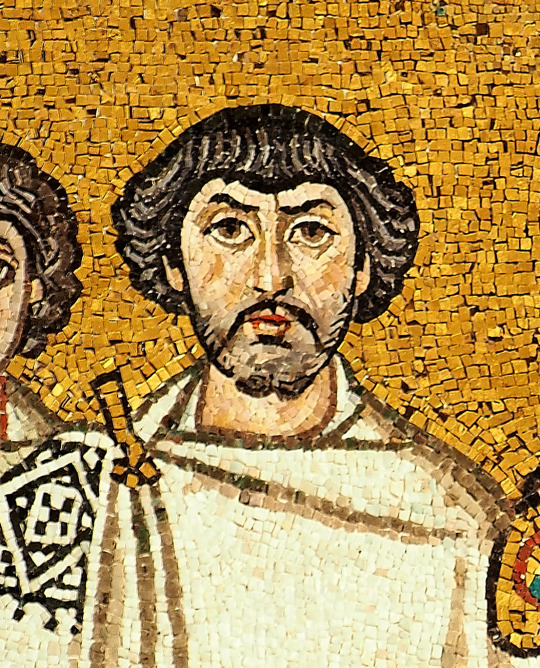
Flavius Belisarius (c.500 - 565)
While Justinian the Great is one of the most significant emperors in history, his accomplishments would simply not be the same, if he did not have Belisarius as his military commander. He was of uncertain descent (possibly Thracian, Illyrian or less so Greek) but his mother tongue was certainly Latin. Belisarius reconquered Rome and Italy while severely outnumbered during the Gothic War, defeated the Sassanids in the Iberian War, conquered the Vandal Kingdom in North Africa, successfully repulsed the Huns and defended the empire from the Persians and the Arabs. The Byzantine Empire reached its largest surface mostly thanks to Belisarius. A more controversial point in his life was when he was commanded to suppress the notorious Nika riots against Justinian, which ended in a massacre of dozens of thousands civillians. Belisarius was above all a strategist; he didn't mind fleeing the battle or using trickery in order to win a war. Despite his analytical mind in battle, he resolutely wasn't one in the affairs of the palace. Belisarius was married and quite smitten with Antonina, who had the favour of Empress Theodora, and thus felt safe to be totally unhinged. Schemes happening in the palace would sometimes find a scapegoat in Belisarius, who was likely the most genuinely devoted person to the emperor. As a result, Belisarius was often not treated well by the emperor and the secretaries and he was cheated on by his wife. He was even led to trial for betrayal, although Justinian eventually pardoned him. According to legend, Justinian first blinded him and then pardoned him, although lately the historicity of this is questioned. What's certain is that Belisarius didn't receive the respect he deserved in his personal life but he earned the respect of the historians, who consider him one of the best military leaders in history.
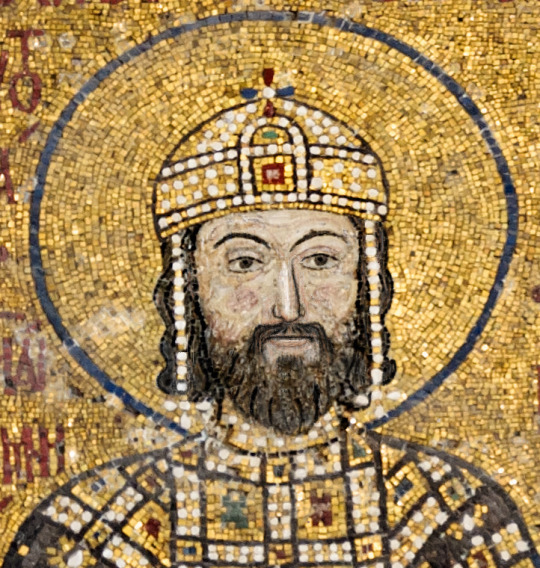
Ioannis II Komnenos (1087 - 1143)
Known as Kaloioannis (John the Good / Beautiful), Ioannis is considered the best emperor from the Greek dynasty of the Komneni. Ioannis was not beautiful, he must have been rather unattractive actually, but he earned the title because of his noble character. He was the brother of Anna Komnene, he was the one she tried to poison so that she would ascend to the throne instead. Ioannis forgave her. Ioannis was very just, modest and pious and would only use his imperial luxuries during diplomat visits. He was married to Irene of Hungary. Whether it was because of his piety, his natural predesposition or a different orientation, Ioannis was not very interested in the joys of marriage. However, he remained devoted and faithful to her. It is notable that during his long reign, not a single person was sentenced to death or mutilation, at a time that this would have been the norm for criminals and traitors. Despite all that, Ioannis was actually a great military leader once need arose. His biggest goal as an emperor was to undo the damage from the Battle of Manzikert 50 years prior. Indeed he forced Seljuk Turks to assume a defensive stance and did expand the empire's power to the east again. The Byzantine population increased during his reign. It is certain that Ioannis left the empire significantly better than how he received it. Some sources suggest that Ioannis' noble character was an inspiration to the people of his empire.

Michael Psellos (1017 - 1078)
Psellos was a Greek man of great knowledge and intellect and a questionable character. He did it all; he was a monk, a writer, a philosopher, a judge, a music theorist, an imperial advisor and courtier and a historian. His skill in literally everything led him quickly to the position of the leading professor in the University of Constantinople and that of secretary in the imperial court. His political influence was immense and he saw many emperors succeed each other while he maintained his position as political advisor. Because a big part of his work is autobiographical, it is unclear whether some of his claims are entirely reliable; Psellos was prone to vanity and sarcasm against those who did not favour him. Psellos studied Plato thoroughly, so much so that at times his faith in Christian Orthodoxy was questioned. *Fun fact: Psellos was apparently good at everything except Latin. His Latin was so rusty he confused Cicero with Caesar!
He looks like a Greek Rasputin in his painting above lol Anyway, he was manipulative but he wasn't nowhere near as controversial as Rasputin, let me be clear.
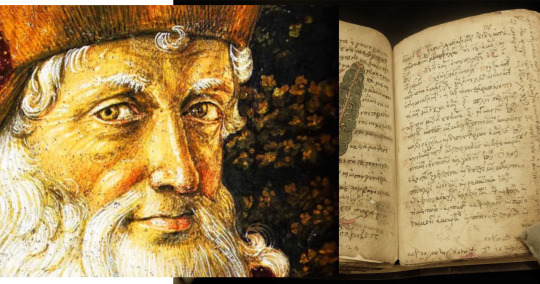
Georgios Gemistos Plethon (c. 1355 - 1452/1454)
Gemistos Plethon was a scholar and philosopher of the late Byzantine era. He was the pioneer of the revival of Greek scholarship in Western Europe. He was secretly not Christian, he believed in the Ancient Greek gods. Plethon admired Platon too. (It's Platon in Greek.) So much so that he added "Plethon" next to his surname Gemistos, which means pretty much the same thing (full) except more archaic and more similar to Plato(n)'s name! He was imperial advisor to the Palaeologi dynasty who at the time were reigning from Mystras, as the empire was dissolving. Everyone suspected his pagan beliefs but he was so influential and important that nobody dared confront him about it. He taught philosophy, astronomy, history, geography and classical literature. He was invited to Florence, Italy to teach Plato and Aristotle and help Florentines understand the differences between the two philosophies. Plethon died in Mystras shortly before or after the Fall of Constantinople. We don't know if he lived enough to see the empire fall. Around 10 years later, some of his Italian followers stole his remains from Mystras and interred him in Rimini, Northern Italy, so that he could "rest amongst free men". Plethon's vision was the revival of the Byzantine Empire, founded on a utopian Hellenic (and not universal) system of government. In one of his speeches, he said "We are Hellenes by race and culture". He is at the forefront of historical studies exploring the connections between Byzantine and Modern Greek identity.

Laonikos Chalkokondyles (c. 1430 - 1470)
Chalkokondyles was an Athenian native, from a prominent old family of the city. He was a historian who witnessed the last years of the Byzantine and the early years of the Ottoman Empire. He was sometimes employed by the Byzantine emperors as a messenger to the Sultan Mehmed II, not without drama. Chalkokondyles wrote in detail about 150 years prior to his lifetime. He described the fall of the Byzantine Empire, he offered a profile of the Ottoman Turks, and he wrote about their conquest of the Venetians and Matthias the King of Hungary. He also explored the civilisations of England, France and Germany. I didn't know about him until I read a great Romanian biography of Vlad Tepes the Impaler (you know, the inspiration of Count Dracula). Chalkokondyles's input is extensive and invaluable for this book; he wrote about Vlad's ancestors and the fights of the Wallachian princes with the Ottomans. His style of writing was mostly clear and simple, styled after Thucydides. He called the Byzantines “Hellenes” and did not use the term "Rhomaioi" (Romans in Greek) for them.
#byzantine empire#eastern roman empire#history#medieval history#middle ages#byzantine history#greek history#greeks#greek people#attichoney4u#ask#long post#tw long#long text#tw long text#tw long post
44 notes
·
View notes
Text

"This is a splendid analysis of one of the great power couples of Late Antiquity. Outsiders both, Belisarius and Antonina, were alternatively welcome and unwelcome to their contemporaries; their lives together were objects of potent contemporary image making as well as intensely hostile gossip. Parnell does a masterful job untangling the complex traditions stemming from the ambiguity of their positions, both at the time and the later myths surrounding them. In so doing, he offers a valuable picture of the Roman Empire in the sixth century from a fresh perspective."
4 notes
·
View notes
Text
I forgot to even mention this in my review, but another funny thing about So Speaks the Heart is how it repeatedly insists that Leandra is better/smarter/more attractive than Theodora. E.g. Leandra is a virgin and Theodora is not, Leandra knows things that Theodora can’t understand, Theodora is attractive but Leandra is beautiful… you get what I mean. The narrative specifies at one point that Theodora has gained weight, while Leandra is still youthful and slim. Alexander even sleeps with Theodora just so he can compare her to Leandra later (and he obviously concludes that Leandra is better). I guess it’s just part of the fantasy—Leandra is prettier than the most famous courtesan in the world, because she’s written for escapism, not accuracy—but a lot of books do this. Generally, if a book is set in the sixth-century Byzantine Empire and the main character is anyone other than Theodora, the narrative will repeatedly emphasize that Theodora isn’t that attractive/powerful/intelligent. If the protagonist is a woman, the author will establish early on that the protagonist is the more beautiful of the two; if the protagonist is a man, the author will establish that he’s smarter and his wife is prettier. And you see this everywhere in Byzantine speculative fiction.
Like, okay, The John the Eunuch books don’t really focus on Justinian and Theodora anyway, but every time Theodora does show up, the narrator has to comment on how unattractive she is (especially compared to John’s love interest). In the earlier books, she’s described as mediocre-looking and generally underwhelming, and in the later books, she’s described as having aged poorly (again, the narrator comments on her weight). A Flame in Byzantium describes her as an aging matron with a receding chin, wearing gaudy, tasteless outfits to disguise her fading looks. Every Belisarius book makes a point of mentioning that Antonina is more desirable than Theodora, either because Theodora is sluttier, less attractive, or somehow “broken” (a lot of books give her exaggerated trauma or mental illnesses, so she can be dismissed as a crazy shrew that no normal man would ever want). And it’s not like I’m personally invested in defending Theodora’s looks—I don’t really care if some vampire novel describes her as less attractive than the idealized protagonist—but I do think it’s a weird pattern. I mean, we know what Theodora looked like. We know how her contemporaries viewed her. We know that she had a successful career as an actress and a courtesan, and that she married the heir to the Roman Empire. And yet so many books present her as an overrated, overweight, middle-aged has-been with bad taste in jewelry and tacky barbarian clothes.
I don’t know. I’m probably overanalyzing this, but I think it speaks to a number of different things. A lot of it is clearly rooted in sexism, but it’s like a fusion of a hundred different sexist tropes. You have the “evil queen” trope, where a powerful woman is depicted as an old hag envious of other girls’ youth and beauty—in Theodora books, the old hag is Euphemia, and in other books, the old hag is Theodora. And some authors have a tendency to portray adult women as uniformly petty and cliquey regardless, so then you get these weird stories where empresses compete over who’s prettiest like they’re sixteen-year-old pageant queens. (Granted, you see that more in older books, but it does pop up in more recent stories.) But that doesn’t entirely account for the “my wife is way hotter than that crazy bitch, Theodora” stories, which almost feel more sinister to me. That specific sentiment feels so rooted in such a complex web of sexist stereotypes—linking women’s worth to their looks, linking men’s worth to their assets (and presenting a pretty, young wife as an asset who increases her husband’s value as a man), depicting any women who aren’t stock “cool girl” characters as “crazy bitches,” etc. A lot of writers clearly do this to make Belisarius seem cooler and more enviable—they can’t give Justinian a normal, loving marriage, because then Justinian would have something that Belisarius doesn’t, so they have to make Theodora ugly or crazy so Belisarius still seems like he “won.” It’s more subtle with the other male-character-centric stories, but I think that motivation is present at least some of the time.
Anyway, this rant kind of got away from me, and again, I’m probably thinking too hard about this (most of these speculative fiction books aren’t exactly great literature, anyway, for reasons independent of Theodora). But I still think the tendency to compare Theodora unfavorably to other, more prominent female characters, often in ways that don’t make a lot of sense (like describing Theodora as overweight, unattractive, or somehow “broken” or “crazy”) is a phenomenon worth remarking on.
#my thoughts#So Speaks the Heart#I always want to call it When Calls the Heart after a terrible historical drama my aunt is obsessed with
0 notes
Text

Been holding onto this beauty for a while 💕💜💙
The lovely Empress Theodora and her gossiping friend Antonina
#empress theodora#justinian the great#antonina#flavius belisarius#byzantium#byzantine empire#byzantine empress#6th century#history art#sketch#digital art#greek tag#roman tag
133 notes
·
View notes
Text
A random bunny
When Unohana was alive, she was the Empress Theodora.
(She is my favorite empress.)
She does not of course remember most of this, until she runs into Belisarius and/or Justinian. (Either or both of whom are now students in the Shinigami Academy.) Either or both of them remember her, also on first sight.
I want to write an Unohana lives story with the above premise, and Justinian or Belisarius trying to figure out this “new” version of someone they had known. (Preferably Justinian, though none of them died young, so maybe they can be deaged somehow? I don’t know.)
If Belisarius is present, he still is pissed because Justinian is a paranoid dumbass incapable of putting his trust in anyone or accepting their loyalty. Belisarius is also not so discreetly desperately hoping to find his wife, Antonina.
3 notes
·
View notes
Note
According to Procopius, Antonina wife of Belisarius provided ships with fresh water by burying glass jars filled with water in sand in a dark room of the ship’s hold (speculated to prevent the growth of algae).
Going off the sailing ask how did sailers transport drinking water on long voyages? Casks of freshwater seems unlikely to me for some reason.
Specialized barrels, typically with vinegar added to help preserve them. Also, alcohol was frequently used for drinking because it keeps much longer. The British typically used grog, a diluted rum from the Caribbean colonies with lemon or lime added (this is where the term 'limey' comes from), while the Spanish and Portuguese typically had a wine ration.
Thanks for the question, Anon.
SomethingLikeALawyer, Hand of the King
144 notes
·
View notes
Text
I have a bunch of favorite Roman/Byzantine couples, ranging from Factual to Probable to Crackship. Which do you like best? (There’s no other option. You Must Choose)
#my polls#tumblr polls#polls#cicero#clodia pulchra#clodia metelli#nero caesar#nero#gaius petronius#Petronius arbiter#poppaea#poppaea Sabina#Aurelian#queen zenobia#justinian#empress theodora#theodora#belisarius#antonina#ancient rome#byzantium
34 notes
·
View notes
Photo
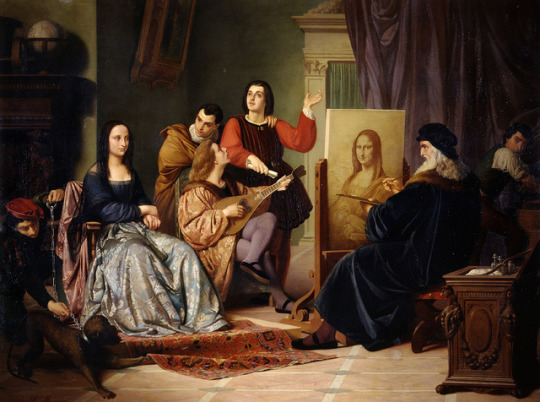
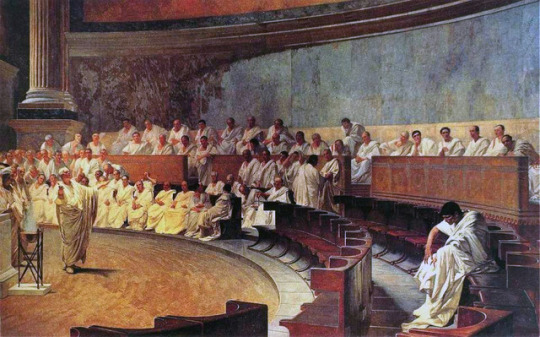
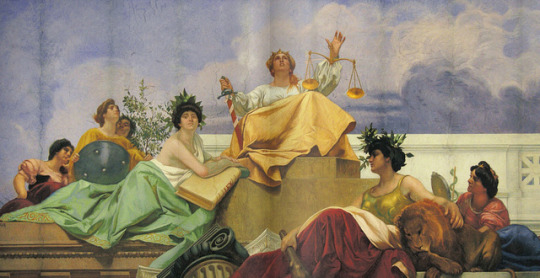
By Alexis Culotta
Cesare Maccari was born 9 May 1840 in Siena. He would grow up to become an award winning painter best known for his classically-inspired compositions.
Studying first at Siena’s Accademia di Belle Arti, Maccabi later continued his training in the Florentine studio of Luigi Mussini. As a testament to Maccari’s innate talent, while working in Florence he received several notable commissions as well as a scholarship to fund a period of study in Rome.
Once Maccari arrived in Rome in the 1860s, he would stay there for the majority of his career. Over the next decade, Maccari’s work was showcased in a number of prestigious venues and he was lauded with substantial commissions. From 1870 to 1873 he worked on a series of seven painted for the Chiesa del Santissimo Sudario dei Piemontesi in Rome, and in 1878 his painting, The Deposition of Pope Silvers by Antonina, wife of Belisarius, was a prize winner of the Turin Exposition that year.
The 1880s and 1890s witnessed Maccari’s work on a fresco cycle for Rome’s Palazzo Madama as well as a cupola cycle for the Basilica di Loreto; upon his return to Rome near the turn of the century, Maccari embarked on an ambitious fresco cycle for the Palazzo di Giustizia. Maccari died in Rome in 1919.
Further Reading: De Gubernatis, Angelo. Dizionario degli artisti italiani viventi, pittori, scultori e architetti (Florence, 1889).
Leonardo da Vinci Painting the Mona Lisa, 1863.
Cicero Denounces Catiline, 1889. Palazzo Madama, Rome.
Justice with the Balance and the Sword Between Law and Strength, c. 1900. Palazzo di Giustizia, Rome.
#cesare maccari#19th century#siena#rome#fresco#palazzo madama#basilica di loreto#painting#luigig mussini
142 notes
·
View notes
Text
One very funny thing about the Byzantines in fiction (especially in literature) is that 90% of the content about them takes place in the early-to-mid-500s, I guess because that Justinian/Theodora/Belisarius/Antonina quadfecta is so well-known and so ripe for melodrama that it can easily carry a novel. But authors also want to talk about later Byzantine emperors and politics and theological issues, so they often end up just cherry-picking random shit from, like, the 800s and beyond, and smashing it into the Justinian-era stuff to make a sort of historical fiction hybrid story composed of every weird Byzantine thing that happened over the course of a thousand years. You get these absurd scenarios in which sixth-century people are dealing with eighth-century religious disputes and fourteenth-century wars, and all of the names and problems are so muddled that it's impossible to make sense of any of it. Sometimes Justinian and Theodora disagree not on the divine nature of Christ, but on the issue of iconoclasm, because iconoclasm is more interesting than Monophysitism, but Justinian makes a better protagonist than Leo III. And Belisarius is there, but he's also Heraclius, and he's also Basil II Porphyrogenitus, slaying Bulgars left and right. And sometimes Theodora is pawning the crown jewels to Venice, because that's a good, dramatic plot point, and because Anna of Savoy can't carry a story like Theodora can. I've seen multiple books imply that Constantinople is on the verge of falling and the empire is on its very last legs in the 540s. (I'm not talking about plague-induced "the world is ending" panic, either—I mean, the author indicating that the Ottomans are at the gates, long before that was remotely a possibility.) Its hilarious to me.
Like, you want to use Justinian, okay, fine. (God knows he needs a good book written about him—I can name a dozen novels about him and Theodora right now, but they're all terrible.) But these authors will choose Justinian, then decide that they want to write about something that happened 800 years after his time, so suddenly Belisarius is personally fighting Mehmed the Conqueror. Like, sure.
#The Sarantine Mosaic duology is the ONLY one that's allowed to get away with this because it's historical fantasy#but even that one makes me laugh#the central religious conflict is psuedo-iconoclasm and the Theodora character is a heretic because she likes dolphins#and Belisarius is also Heraclius in that one too
12 notes
·
View notes
Text
I wouldn’t make a YouTube channel, because I can’t stand hearing my own voice and I’m wary of showing my face on the Internet, but if I did, I’d be so good at lengthy Jenny Nicholson-style deep dives into topics nobody cares about. I would love to do a 4-hour explainer on the insane micro-tropes found in sixth-century Byzantine historical fiction. The clumsy attempts at romance between characters who barely knew each other irl, the self-insert loser eunuchs who are always lusting after Theodora, the sibling rivalry plotlines that take up a ridiculous amount of page time, the increasingly derivative sci-fi/fantasy alternate history Belisarius ‘verse that’s been living rent-free in my head since Foundation and Empire. I could talk about these deranged books for ages and never even scratch the surface of how weird they get. Half of the video would just be a static picture of Antonina shooting a robot with a gun while I rant about how we got to this point
#Antonina does in fact shoot a robot with a gun in one of these things. I didn’t make that part up#they’re so insane!!! and I have nobody to bitch about them with so I need a captive audience#its the funniest thing in the world to me how they’re all written by so many different authors but they follow such similar storylines#they have the same anachronisms and trends even when they’re made completely independently#it’s so great
25 notes
·
View notes
Note
Are you aware of any historical cases of a fool supplying inside information to historians like Mushroom did?
Jesters, no. But Mushroom is based on Procopius, who was a scholar and legal adviser in the Emperor Justinian’s regime (attached to the staff of the general Belisarius). Procopius is in/famous for writing multiple panegyric histories of Justinian covering everything from his wars to his public works, and then a Secret History that denounced Justinian, his wife Theodora, and Belisarius’ wife Antonina.
The Secret History is quite salacious. In addition to lambasting Justinian as an incompetent tyrant as opposed to an enlightened ruler on the level of Augustus, Theodora was described as a scheming, debauched prostitute who totally dominated Justinian and constantly undermined his policies out of a desire to monopolize power, and Antonina was also described as an unfaithful wife who cuckolded Belisarius with his own step-son.
14 notes
·
View notes